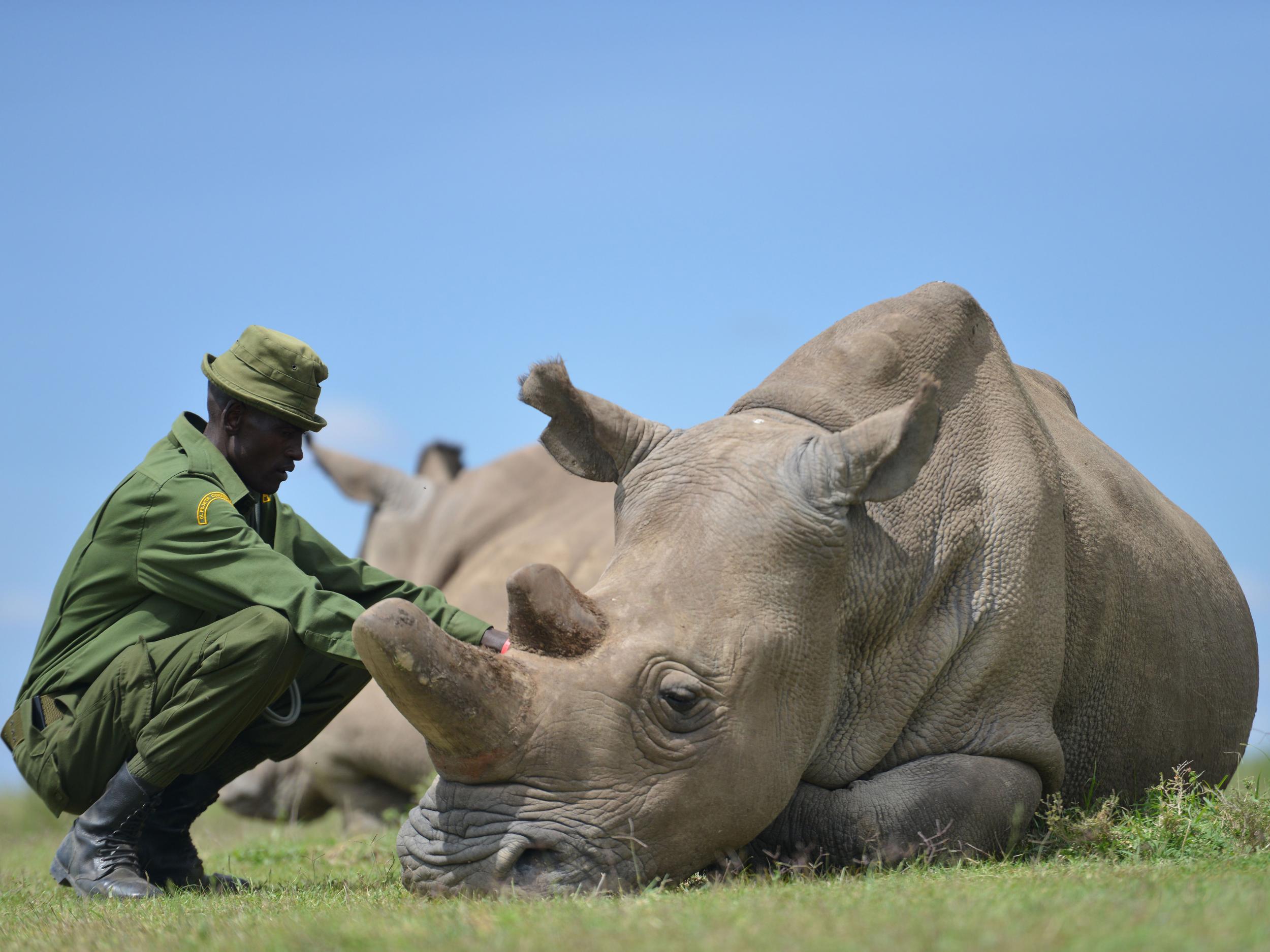Northern white rhinos could be brought back from brink of extinction 'within three years' using lab-grown embryos
‘I do not want to witness northern white rhinos disappear in front of our eyes just because we did not care’

Your support helps us to tell the story
From reproductive rights to climate change to Big Tech, The Independent is on the ground when the story is developing. Whether it's investigating the financials of Elon Musk's pro-Trump PAC or producing our latest documentary, 'The A Word', which shines a light on the American women fighting for reproductive rights, we know how important it is to parse out the facts from the messaging.
At such a critical moment in US history, we need reporters on the ground. Your donation allows us to keep sending journalists to speak to both sides of the story.
The Independent is trusted by Americans across the entire political spectrum. And unlike many other quality news outlets, we choose not to lock Americans out of our reporting and analysis with paywalls. We believe quality journalism should be available to everyone, paid for by those who can afford it.
Your support makes all the difference.IVF-ready embryos have been created using sperm from northern white rhinos in an unprecedented development that paves the way for the resurrection of the species.
The sperm was used to fertilise eggs from the closely related southern variety, and the resulting hybrid embryos have been frozen for implantation into surrogate mothers.
Northern white rhinos were left functionally extinct after the last male, Sudan, passed away in March, but their tragic demise has stimulated efforts to develop technologies that can bring them back from the dead.
Using IVF, the researchers hope to see the first northern white calf born for decades within the next three years.
The downward spiral of the rhinos caused by poaching in central Africa has been watched helplessly by scientists and conservationists for years.
As numbers dwindled and the remaining rhinos struggled to reproduce, Dr Thomas Hildebrandt and his team at the Leibniz Institute for Zoo and Wildlife Research collected semen from the last surviving males in the hope it could one day revive the northern whites.
“We came to the point around 2008 that there was no chance to save this subspecies with the techniques we had available at that time,” he said.
These fears were confirmed when tests revealed the only surviving northern whites – a mother and daughter named Najin and Fatu – had serious reproductive problems.
That should have been the end, but rapid advances in reproductive and stem cell science have given Dr Hildebrandt and his international team of experts hope.
Using techniques normally reserved for the creation of champion racehorses, the scientists used some of the preserved sperm to fertilise an egg extracted from a southern white female. The trial served as a test before experimenting with precious eggs taken from northern whites.
The next step is to gain permission from the authorities in Kenya – where Najin and Fatu currently reside – to perform the same procedure using those eggs.
Having created the first ever test tube rhino embryos, the scientists now see a clear path ahead to creating a new generation of northern whites using surrogate mothers in Africa, Europe and the US.
“We are quite confident with the technology,” said Dr Hildebrandt.
“We will start with a pure southern white rhino embryo in the next weeks and months to test the system, and after that is successful we will implant a northern white rhino into a surrogate mother.
“Our goal is that within three years we have the first northern white rhino calf born.”
Though there are risks associated with the extraction of eggs from adult rhinos, not least anaesthetising a 1,700kg mammal, the scientists are sure northern white calves produced this way will be perfectly healthy.
“We make foals from the best champions around the world and they still become champions, so the fact the embryo is made in the laboratory doesn’t mean it’s a fake embryo,” said Professor Cesare Galli, a veterinary medic who led the procedures at Avantea medical laboratory in Italy.
These initial results were published in the journal Nature Communications.
In a separate venture, the scientists are aiming to produce new sperm and eggs from stem cells, which they hope to create using samples of skin and other tissues collected from 12 different northern whites.
Though this approach will likely take up to a decade to yield results, the scientists consider it a crucial component in their long term strategy to create a healthy, genetically diverse rhino population.
“The main goal is to have pure northern white rhinos – it doesn’t matter whether it goes through stem cells or it goes through the harvest of oocytes [eggs] from the last living donors,” said Jan Stejskal from Dvur Kralove Zoo, which housed the final northern whites before they were moved to Kenya.
The scientists see it as their responsibility to bring back the species, which once played a crucial role in central African ecosystems, using all the tools at their disposal.
“The northern white rhino didn’t fail in evolution, it failed because it was not bulletproof,” said Dr Hildebrandt.
“To me if we have a chance to save them I do not understand why we should not – I do not want to witness northern white rhinos disappear in front of our eyes just because we did not care,” said Mr Stejskalf.
Join our commenting forum
Join thought-provoking conversations, follow other Independent readers and see their replies
Comments